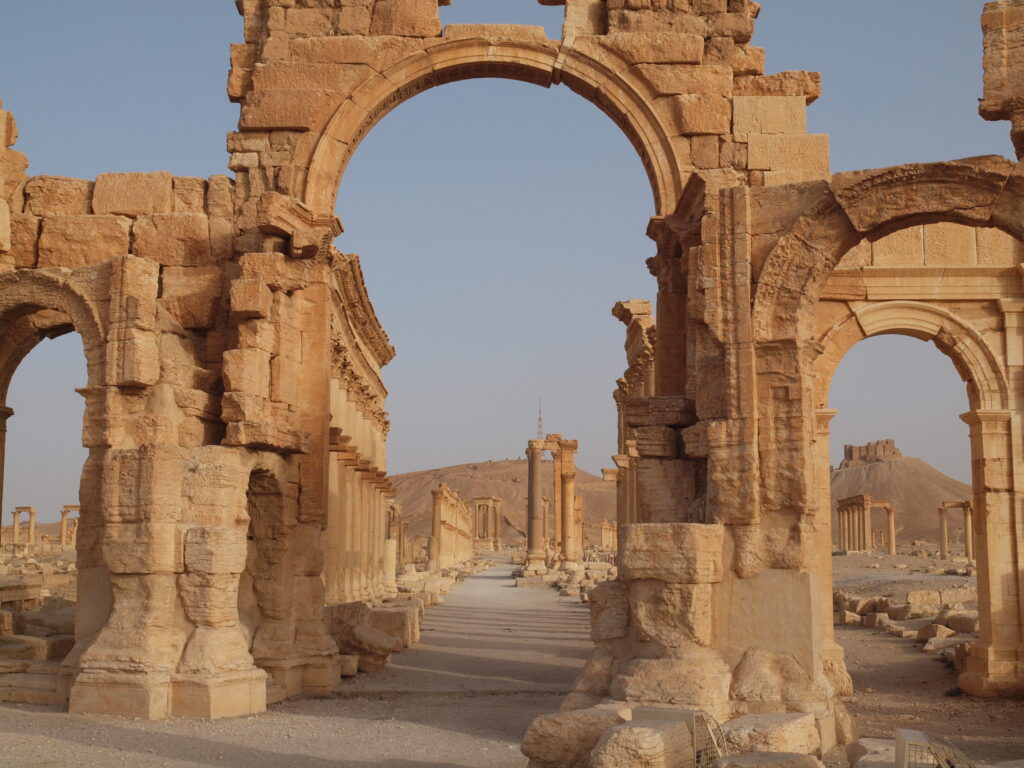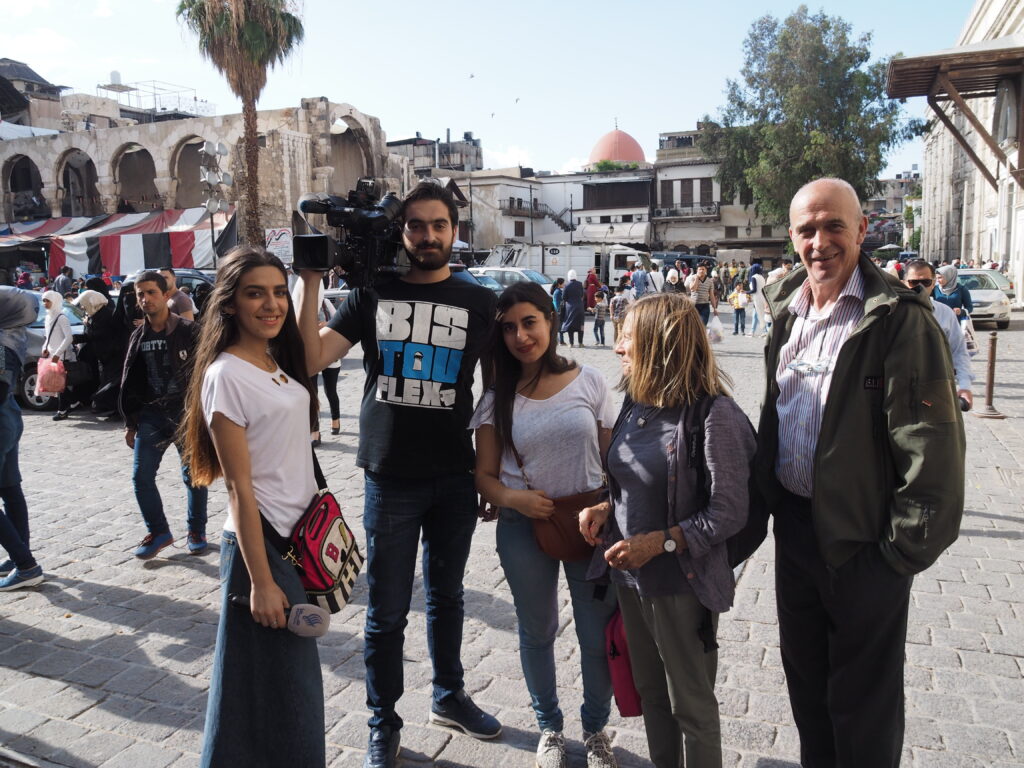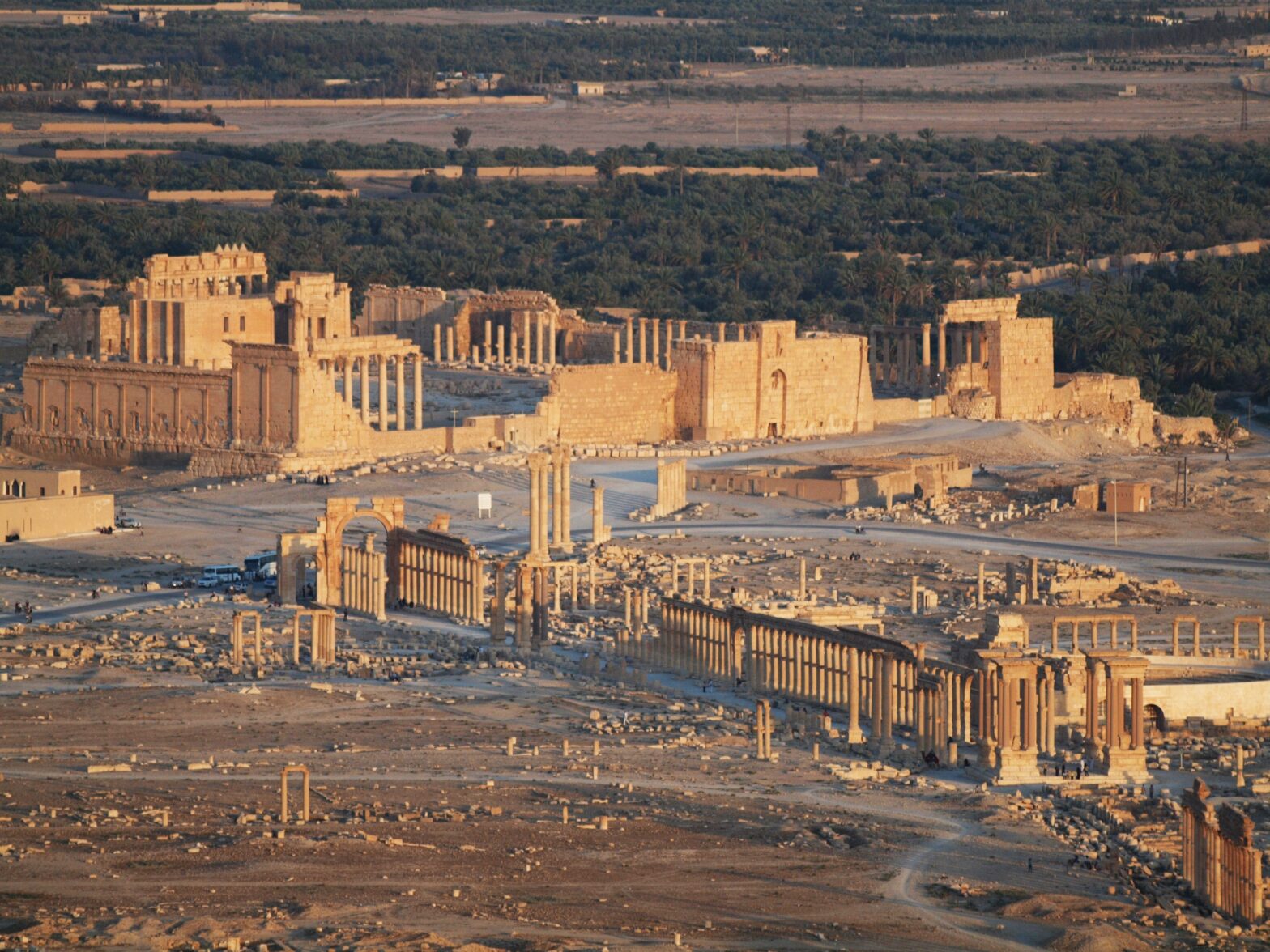Back in 2015, a convoy of ISIS vehicles headed south from their base in Raqqa towards the ancient Roman city of Palmyra and the small town of Tadmor that serves this World Heritage treasure. The town also housed a Syrian government prison and army garrison - which was the ostensible target of the takfiris, but taking control of the town and therefore the area to the East up to the Euphrates was the more significant objective. Wikipedia describes this as the "Palmyra Offensive military operation", and notes it was nicely timed to coordinate with the Jisr al Shoghour offensive by the so-called 'Army of Liberation' - Jaish al Fattah - in the West of Syria, which had drawn Syrian army defence forces away from Palmyra. There were a number of assaults on the town, initially repelled by the Syrian Arab Army and allies, but ISIS reinvaded and occupied it until mid 2016. Palmyra was then liberated with the help of Russian forces, and a concert held there to celebrate, and commemorate the soldiers and civilians brutally murdered by the Western-backed terrorists. It wasn't to be the last time however, and during another reconquest of the city, ISIS managed to destroy part of the theatre stage. What exactly had happened wasn't clear, with no overflights or media to indicate the damage to the Roman ruins. Little was known except that ISIS had planted explosives in the Temple of Bel, and knocked the arch out of 'Heaven's Gate' - as shown below in May 2010, 10 months before the launching of the war on Syria.

The Temple of Bel, cited at the back of the Roman city in the leading photo, was a relatively small building in a much larger enclosure, with the entrance portal giving an indication of what would once have been there. The destruction wrought by ISIS was only the latest in centuries of wars and earthquakes.

The damage`to the Temple of Bel was far more terminal however, leaving nothing other than the entrance portal and a few of the columns remaining. While this was an international crime, committed with the intent to draw in greater foreign intervention, it should be noted that the Temple of Bel was nothing like as impressive as the Temple of Bacchus in Baalbek, - of which more shortly - with few internal features or carvings. ISIS threatened to blow up the building for some time before doing so, though it wasn't clear what demands they were making that might have prevented them from going ahead. One might simply define their delinquent behaviour as "attention-seeking", given the lack of ideological justification for it. Unlike the destruction of Aleppo's 12th century Ummayad minaret by ISIS 'brothers in arms' Jabhat al Nusra, the Roman palaces and theatres of Palmyra had no religious significance. Below I post three videos giving an overview of these events - the first a short series taken by myself in 2010, showing the whole area as seen from 'Palmyra castle' overlooking the city, and finishing with views of the Temple of Bel as intitially seen from the below-ground race for sacrificial animals.
The next short video is from a series taken by British journalist, activist and videographer Tom Duggan, who visited Palmyra in 2018 with Father Andrew Ashdown, in a tour that included Deir Al Zour, and the monasteries of Mar Mousa and Qana. This video clip shows what remains of the Temple of Bel, to be compared with the last 15 seconds of my own video recording above.
The next clip shows the remains of ‘Heaven’s Gate’, and pans to show the rest of the site looking towards Palmyra castle in the background:
Tom Duggan filmed these videos in 4K on his phone, and downloaded them onto a drive for me when we met in Damascus. He was a fearless war reporter, often accompanying the Syrian Arab Army to the ‘front line’, and suffered a serious leg injury not long after our visit. While he received treatment for it in Syria, he decided to return to the UK for an operation, accompanied by his Syrian wife Fourat. Tragically he suffered a massive heart attack while convalescing, dying in a country which had ignored his journalism and supported the terrorists who injured him. An old friend launched an appeal, to help with funeral and other expenses, and which is also a tribute to him and his close friend Andrew Ashdown. In the video below Father Andrew describes his feelings about those terrorists of ‘Islamic State’, who were so crucial in facilitating the US occupation of Syria’s Eastern Oil and Gas fields.
Below is a photo taken outside the Ummayad Mosque in Damascus, with Tom Duggan on the right, my partner and a Syrian TV crew and journalist we met there. This was just weeks since the liberation of Douma and clearing of IS fighters from southern Damascus, so with a renewed spirit of optimism about Syria’s future and freedom. Incredibly, and almost invisibly, Syria continues to suffer under US occupation, plunder and sanctions, while the terrorist groups in the North West still launch attacks around Idlib, and maintain their violent presence west of the Euphrates.

Israel also maintains a covert presence in Syria, collaborating with both US and SDF forces, and with those in charge of terrorist groups in the North West. This became evident recently when Israeli warplanes launched an attack on Syrian Army forces near Aleppo in coordination with terrorist groups on the ground. The threat from Israel to Syria as it expands its war on Lebanon is significant, and another reason to make the link between the Zionist State and the Islamic State. In part 2 of this article I will illustrate the story of Baalbek and the current threat its Roman city faces from ISrael..
DM 11th November 2024
